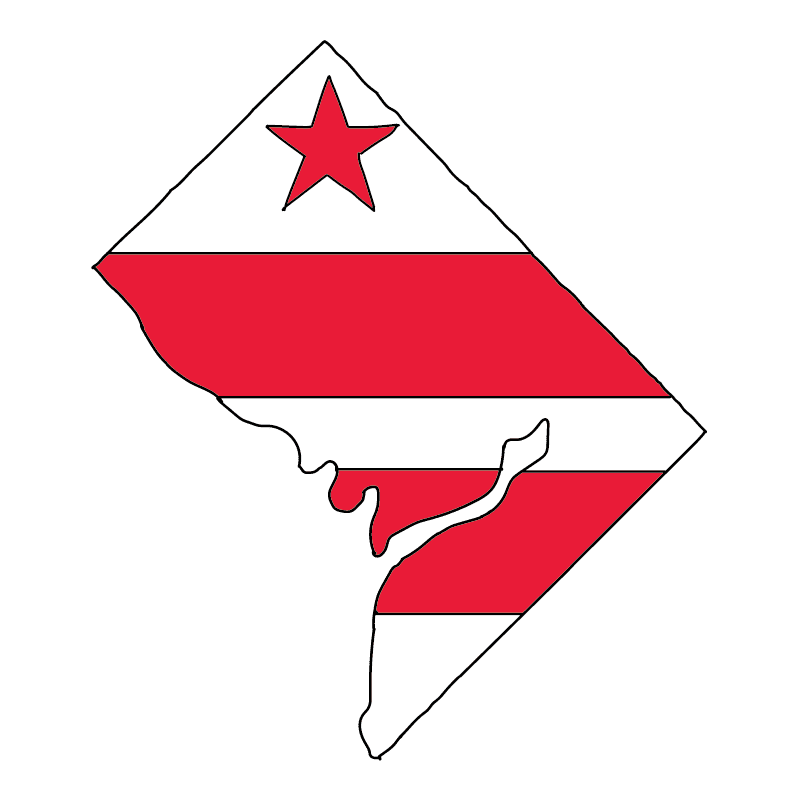The District of Columbia boasts a rich tapestry of history and culture, and among its symbolic blooms, the rose stands as a timeless emblem of beauty and significance. The history of roses in the District dates back to its early establishment. This is where the fragrant blossoms found a place in the gardens of influential figures and public spaces alike. Beyond their aesthetic appeal, roses have come to represent unity, resilience, and a shared appreciation for the enduring elegance that defines this iconic city. Explore the journey of the rose as it plays an important role in shaping the history and culture of the District of Columbia.
Historical Roots
The history of roses in the District of Columbia dates back to the early 1800s. Thomas Jefferson, who was an avid gardener, brought several varieties of roses from Europe and planted them in his gardens at Monticello in Virginia.
Over the years, many residents of the District of Columbia began to cultivate their rose gardens. By the mid-1800s, the city had become known for its beautiful rose gardens. Consequently, the American Rose Society was founded in 1892 to promote the cultivation and appreciation of roses throughout the country.
In the early 1900s, the District of Columbia’s rose gardens became an internationally popular tourist attraction. The National Cherry Blossom Festival, which began in 1912, also helped to bring attention to the city’s rose garden. This is because many of the festival’s events were held in the city’s parks and gardens. The city’s annual Rose Show, which is held in June, showcases some of the city’s most beautiful blooms. The show features hundreds of roses of all varieties and is open to the public for viewing and judging.
Today, the state is home to several public rose gardens, including the National Rose Garden on the grounds of the White House. The garden features over 9,000 roses of more than 125 varieties, and is open to the public from April to October each year. Other popular rose gardens in the city include the United States Botanic Garden, the Smithsonian Institution’s Enid A. Haupt Garden, and the Kenilworth Aquatic Gardens.
Overall, the history of the rose in the District of Columbia is a vibrant one, and the city’s culture and gardens continue to be a source of pride and beauty for residents and visitors alike.
Cultural Significance
Roses have a significant cultural significance in the District of Columbia. The city is home to several rose gardens and parks, including the United States National Arboretum. The garden features over 5,000 rose bushes. The National Cherry Blossom Festival, which takes place in Washington, D.C., every year, also features a rose garden.
In addition to their beauty, roses have a rich history and symbolism. The rose is the national flower of the United States. It has also been used as a symbol of love, beauty, and passion for centuries. Roses are also associated with various religious and cultural traditions. For example, in Christian iconography, the red rose is a symbol of Jesus Christ’s bodily suffering, as well as the blood of other saints such as Alban [1].
Moreover, roses have been used for medicinal purposes throughout history. The ancient Greeks, Romans, and Egyptians used roses to treat a variety of ailments, including digestive problems, headaches, and skin irritations. Today, rose oil and rose water are still used in aromatherapy and skincare products.
The cultural significance of roses in the District of Columbia is further highlighted by the Heritage Rose District. The Heritage Rose District is a neighborhood in New York City that is home to over 4,000 roses of historic significance. The Heritage Rose Foundation is working to establish similar districts in other cities, including Washington, D.C. [2].
Overall, roses have played an important role in the culture and history of the District of Columbia. From their beauty to their symbolism, roses continue to be a beloved and cherished flower in the nation’s capital.
[2] (https://www.heritagerosefoundation.org/heritage-rose-district-of-nyc)
Economic Impact
The rose industry has a significant impact on the economy of the District of Columbia. According to the United States Department of Agriculture, the wholesale value of cut flowers in the District of Columbia was $3.3 million in 2019. The majority of cut flowers sold in the District of Columbia are imported from Colombia, which is one of the largest producers of cut flowers in the world.
The rose industry in Colombia has been a major contributor to the economy of the District of Columbia. In 2018, the majority of roses Americans gave each other on Valentine’s Day. Additionally, roughly 200 million in all, were grown in Colombia [1]. The cut flower industry in the United States takes in $34.3 billion of revenue each year. Nearly 80% of the flowers Americans buy are imported from Colombia [1].
The rose industry in Colombia has created many jobs and has helped to lift people out of poverty. According to Asocolflores, the association of Colombian flower exporters, the floriculture sector in Colombia employs over 130,000 people directly and indirectly [5]. The industry has also helped to improve the infrastructure in rural areas of Colombia, where many of the flower farms are located.
In conclusion, the rose industry has a significant impact on the economy of the District of Columbia. The majority of cut flowers sold in the District of Columbia are imported from Colombia. The country is one of the largest producers of cut flowers in the world. The industry has created many jobs and has helped to lift people out of poverty in Colombia.
Artistic & Literary Influence
In addition to its role in the history, culture, and economy of the District of Columbia, the rose has played a significant part in the state’s art and literature. The city’s love for roses is evident in the various art forms that have been created over the years.
Artists have used roses as a symbol of love, beauty, and passion in their works. For example, the famous American painter, Georgia O’Keeffe, painted a series of rose paintings that capture the beauty and elegance of the flower. Her paintings are known for their bold use of color and striking compositions.
In literature, the rose has been used as a symbol of love, beauty, and hope. For example, the famous American poet, Langston Hughes, wrote a poem titled “Harlem” that uses the rose as a metaphor for unfulfilled dreams. The poem speaks to the struggles of African Americans during the Harlem Renaissance and their hopes for a better future.
The rose has also been featured in various plays and musicals performed in the District of Columbia. For example, the famous musical, “Gypsy,” features a song titled “Everything’s Coming Up Roses,” which has become an iconic piece of American musical theater.
In conclusion, the rose has had a profound influence on the art and literature of the District of Columbia. Its beauty and elegance have inspired artists and writers for generations, and its symbolism has been used to convey a variety of emotions and ideas.

EXCLUSIVE District of Columbia COLLECTION
Visit Store
From Clothes & Apparel To Home Décor & Accessories. Free Returns. Unique Designs. Worldwide Shipping.
